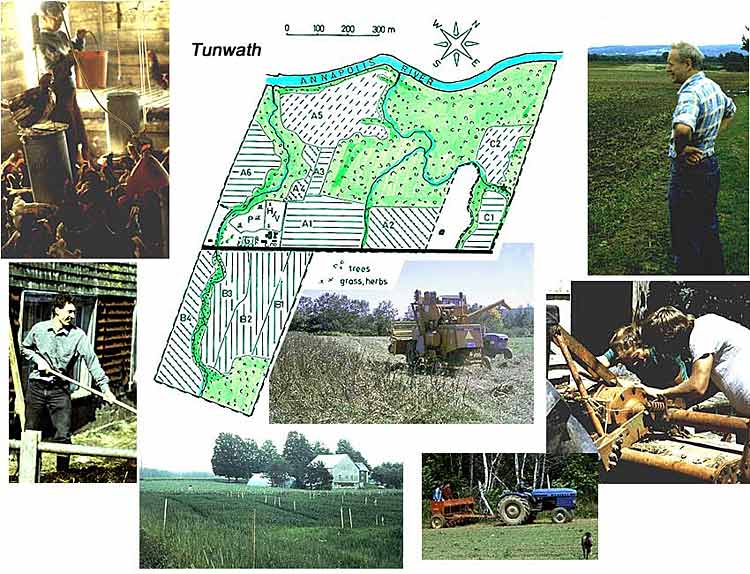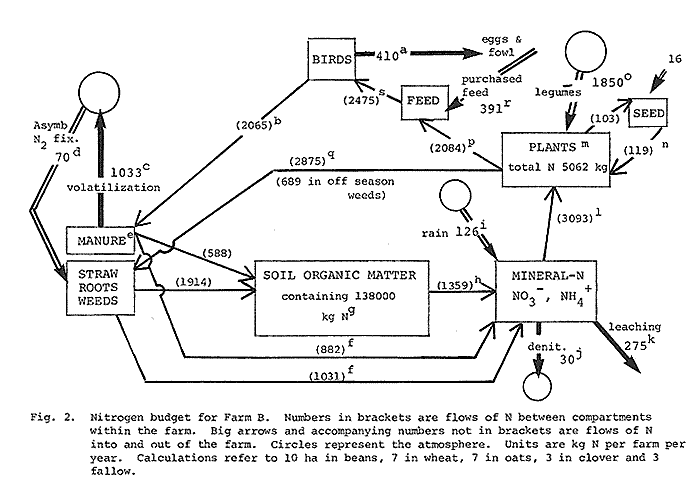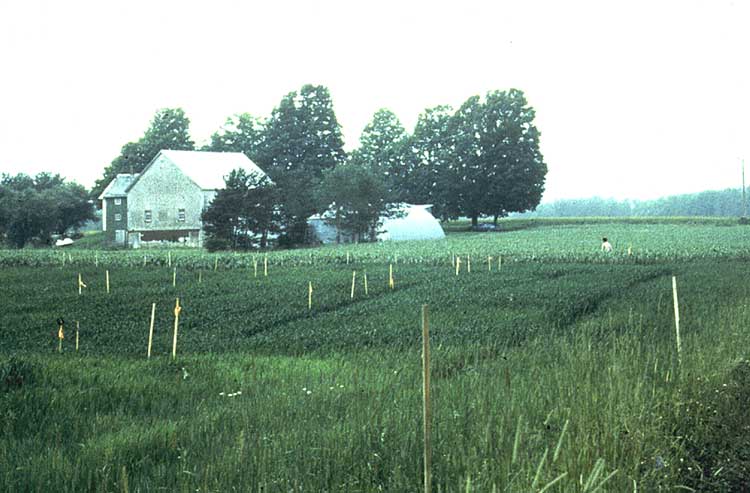|
One of the farms I visited was Tunwath Farm, near Lawrencetown, Annapolis Co. The farmers, Basil & Lilian Aldhouse, produced eggs from 2100 laying hens, a small number by industry standards. However, they wanted only as many birds as they could feed from crops grown on their own land, and that number was about 2100. "The barn should fit the land", Basil would say. In this regard they were unusual, as most commercial laying hen operations maintain many more birds and rely heavily or entirely on imported feed. In other respects, the farm was operated conventionally with routine use of fertilizers and herbicides, and pesticides as needed. Basil was good at growing crops, receiving a prize in 1975 for the highest oat yield in the province. In 1976, he might have got a prize for the lowest yield! Basil and Lilian had become concerned about the health of their farm, e.g. Basil said he couldn't find earthworms any more. He had read a little about organic farming, and decided to make a "cold turkey" conversion: in 1976 he didn't apply any fertilizer or herbicide to his crops. He reasoned that with nitrogen-fixing legumes (fababeans, clover and alfalfa) on one-third of his land, there should be plenty of nitrogen going into the farm without fertilizers, and he figured he could control weeds adequately by mechanical means. However, his cereal yields dropped, and dramatically so for oats. At the time, "organic farming" (also known as ecological farming, sustainable farming, biological husbandry) had little credibility within the mainstream. Extension agents had advised him against it and were not surprised when his oat yields tumbled, attributing it to lack of nitrogen. When I went to the farm in 1977 to look at his fababeans he told me about his experiment and asked me "why should the cereals be N deficient when I have legumes on 1/3 of land and I'm recycling the hen manure?  |
|
| Initially I thought it could be due to low levels of nitrogen fixation by his legumes and might be resolved by inoculation of seed with appropriate rhiozbia. So I would look at the legumes and do some measurements of nitrogen fixation. That was the first of a succession of hypotheses followed by observations or experiments that I and students working with me conducted in collaboration with Basil and Lilian in an attempt to understand and resolve the limitations to crop production on their farm. |
Observations:
|
 |  |
|
Hypothesis II: There are large losses of N from farm by leaching/runoff &/or ammonia from the roost, resulting in insufficent N for cereal crops |
To test the hypothesis we measured stocks and flows of N on the farm:

Observations
|
|
Possible Strategy: OK, Good! As Soil Organic Matter (SOM) increases, the N mineralized will also increase so we wait for SOM to increase. ("Build up the organic matter" was a commonly cited strategy for increasing production in organic farming.) Question: How long would it take for N mineralization and yields to reach acceptable levels? Answer: From a model that incorporated our data: approximately 100 years!!!!! |
 |
| Waiting 100 years was not an option! So we came up with a different strategy. |
Alternative Strategy: To Get more of the N cycling through the crops and less through humus and weeds:

|
| This strategy was introduced in 1979. By 1982, we realized it wasn't working. |

| We were particularly puzzled by the low oat yields as oats are known traditionally as a "non-demanding crop" - that's why we put all manure on wheat, with none going to oats. As well, oats had been reported to produce well under organic management. So a set of experiments was superimposed on the farmer's regular operations to test hypotheses related to the low oat yields. |
On-Farm Experiments

The posts mark the location of small plots superimposed on the farmer's
crops. Winter wheat in the foreground, then oats, then fababeans, 1985.
Next Slide | Frames Version
